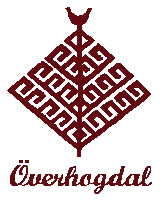First settlers to Cooperstown
The First Överhogdal Settlers to Cooperstown
Life is not always straightforward: the Sundberg and Erickson stories.
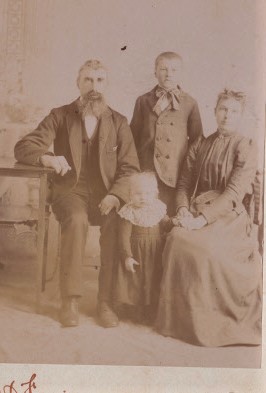
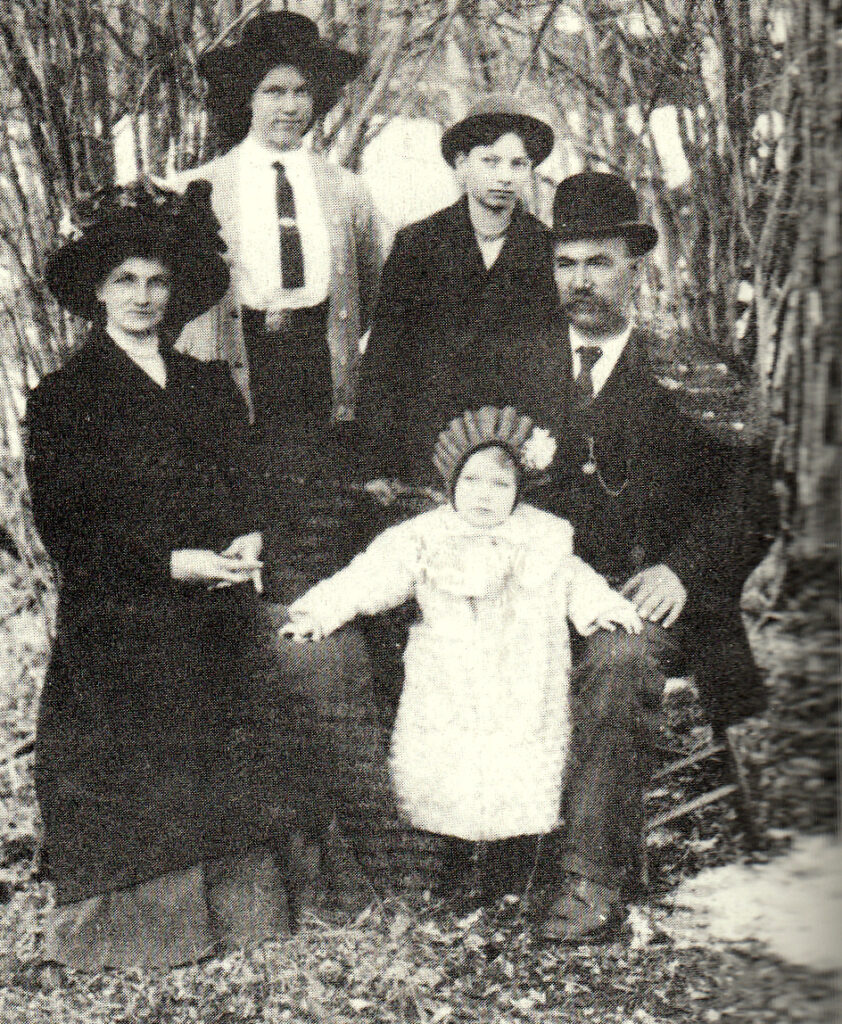
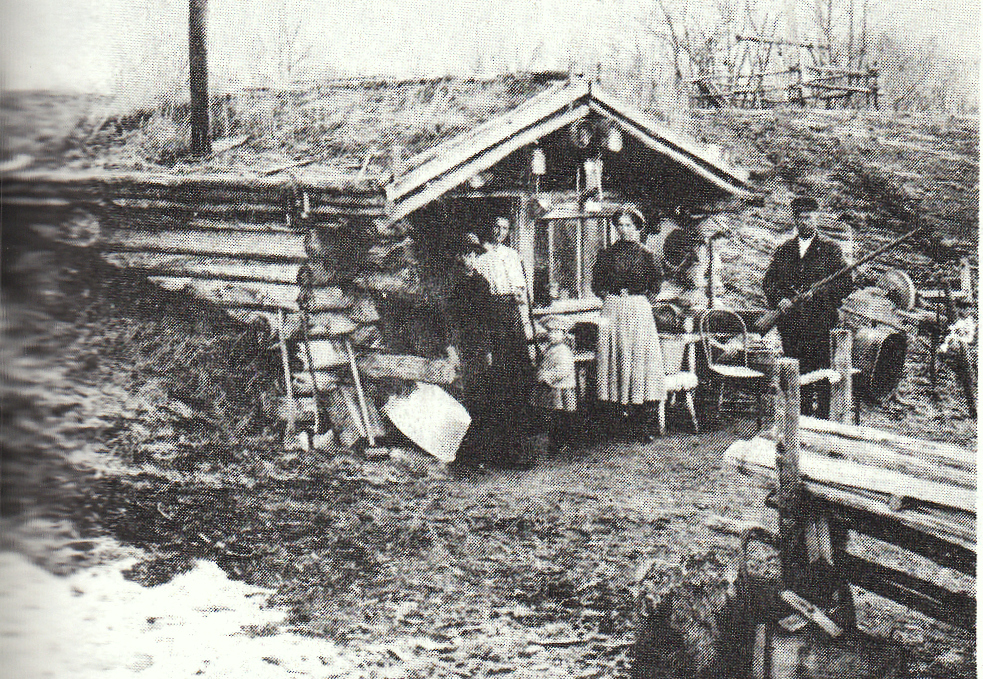
(some information from this story is from Ferintosh local history ”Little Beaver Tales”)
There were two families who left Överhogdal for America in 1882. The first to leave were Lars Andersson (b.1846) and Brita Olofsdotter (b.1853). Lars grew up at the farm Eskils and Brita on a croft. Her parents at some point settled on Rosången Lake near Överhogdal and called their home Laverviken. Lars and Brita married in 1875 and began farming at #19 (the priests added more numbers as the properties were divided into smaller units around 1870, so the numbers do not necessarily follow the chart shown earlier after this time) Lars and Brita had a tough first few years of marriage. They had two sons who both died as toddlers. A new start in America must have looked inviting, so they sold to the Svartvik lumber company and headed overseas. They were the first from Överhogdal to settle in Cooperstown, North Dakota.
They took the new surname Sundberg and Lars farmed in Cooperstown (I am not sure he owned the farm) and they had another son, Louis, born in 1885. Somewhere around 1893 Brita died. Lars remarried Anna Dahlin (1877) about 1895. Anna was 14 when she emigrated with her parents and sister from near Berg, Sweden to Cooperstown; they were sponsored by an uncle. She was 19 when she married Lars, who was 30 years older than her.
Around 1900 they were among a group of Cooperstown settlers who decided to emigrate again, this time to Canada. Canada had recently opened up the western expanse known as the Northwest Territories to settlement. Lars and Anna had two daughters and Anna was pregnant when they settled on Red Deer Lake, near the town of Ferintosh. Their son Raymond was born a short while later. Around 1905 Lars was working in the US. It was hard creating a working farm from scratch and he, as did many others, took work as they could find it to help them survive. Tragically, he was killed in a work accident. (I don’t know what work he was doing; logging was a common way to make a few extra dollars) Anna and the children must have been with him in the States and they returned to Ferintosh. In the 1906 census Anna, who was not yet 30, was a housekeeper for farmer Påla Hans Erickson in Louisville, near Ferintosh. Her three children lived with them. Her step son Louis had gone his own way by this time.
P. Hans (b. 1862) was from Orsa, Sweden and had emigrated to Idaho in the 1870’s, working mostly in the logging industry. In 1887 he was working in Minnesota and met Anna Norman, who was from the same county in Sweden. They married and had two daughters. Around 1895 he decided to work in Canada’s newly opened up West. He did not bring his family. I don’t know if his initial plan was to get set up in the new place and then send for them, but that never happened. In the 1901 census he was living near the Sundbergs at Red Deer Lake and working as a farm labourer. The census noted that he was single. Meanwhile, his wife Anna and daughters were living with her father in Isanti, Minneapolis.
After a few years the housekeeper relationship changed and Anna had two children with Hans. They married in 1916 and had a third child that year, so perhaps Hans got his divorce. Or, maybe not! Anna claimed to be married on all the Isanti census records, except 1940 when she claimed to be widowed! (it’s possible she married again, but her surname was still Erickson). Anna died in 1947.
Hans and Anna farmed for some years and then moved into Ferintosh where Hans was a shoemaker and did shoe repairs. Hans died in 1941 and Anna in 1969.
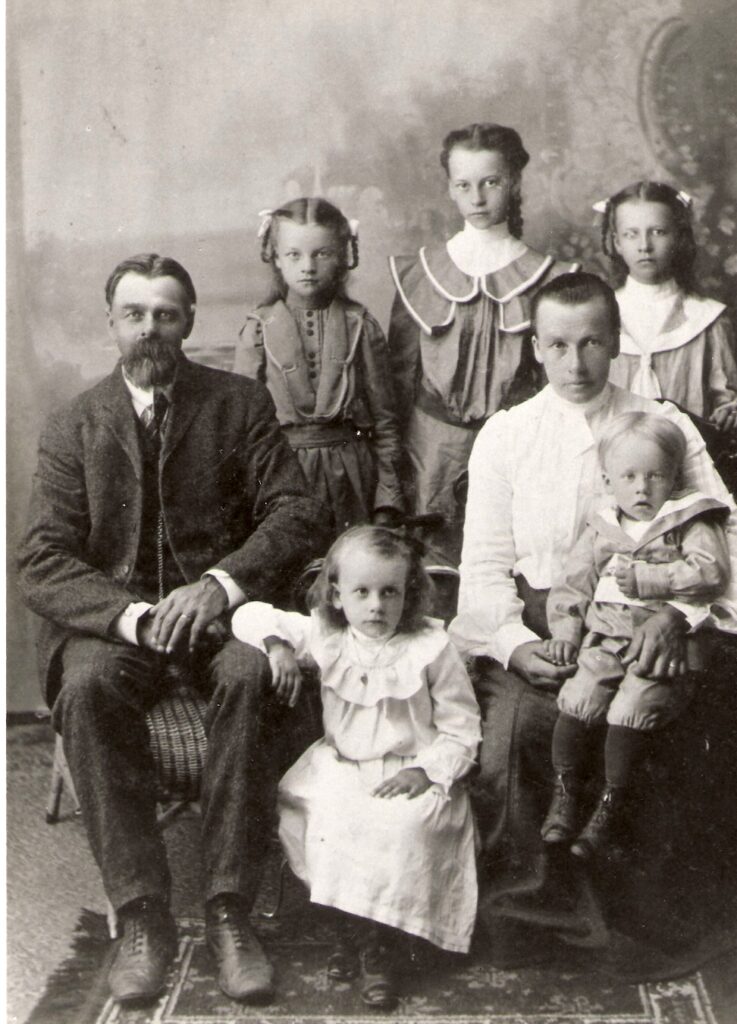
Jöns Persson and two Märtha’s from Överhogdal
The second family to leave in 1882 were Jöns Persson (b.1850) and Märtha Esbjörnsdotter (b.1848). They were members of the Swedish Mission Covenant church. Jöns was a younger brother of Jonas Persson Skanse, who we will read about in a bit. Jöns was born in Ytterhogdal and 19 years younger than Jonas. When Jonas bought a small farm in Vitvattnet, Rätan, Jöns moved there to help him out, and when Jonas’s family moved to Jo-Påls in Överhogdal in 1871, Jöns came with them. In Överhogdal he worked on other farms for a few years before marrying Märtha in 1875 and working on her family farm, ”Östgåln”. They had two daughters when they made the move; Margareta 5 and Gölin 3. They had lost an infant daughter the previous year.
Jöns (now Jens Person) settled in Cooperstown shortly after the Sundbergs. Similar to Lars, Jens lost his wife in the early years, before 1890. His daughter Gölin also died early on. In 1890 he remarried another Märtha, also from Överhogdal. Märtha Larsdotter (b. 1861) was from the farm Ol-Lars and related to some of the other emigrants. I don’t know if she emigrated planning to marry Jens or emigrated to join some of her relatives. Whatever the plan, she and Jens married quite soon after her arrival.
Jens’ daughter Margareta from his first marriage died before the turn of the century. He and Märtha #2 had five children, four daughters and a son. Jens died suddenly in 1909 when the children were still relatively young, but with the help of his neighbours and a hired hand or two, Märtha stayed on the farm at least until her children married. From the Skanse Saga (a family history book), Jens’ brother Jonas lived nearby and helped out a lot despite being in his seventies. In the 1910 census, Överhogdal emigrant Halvar Ryden worked for Martha as a farm labourer. In 1920 there was another man from Sweden helping out. Martha lived with her unmarried children in Cooperstown in 1925, but I did not find her whereabouts after this. She was buried in Cooperstown in 1940.
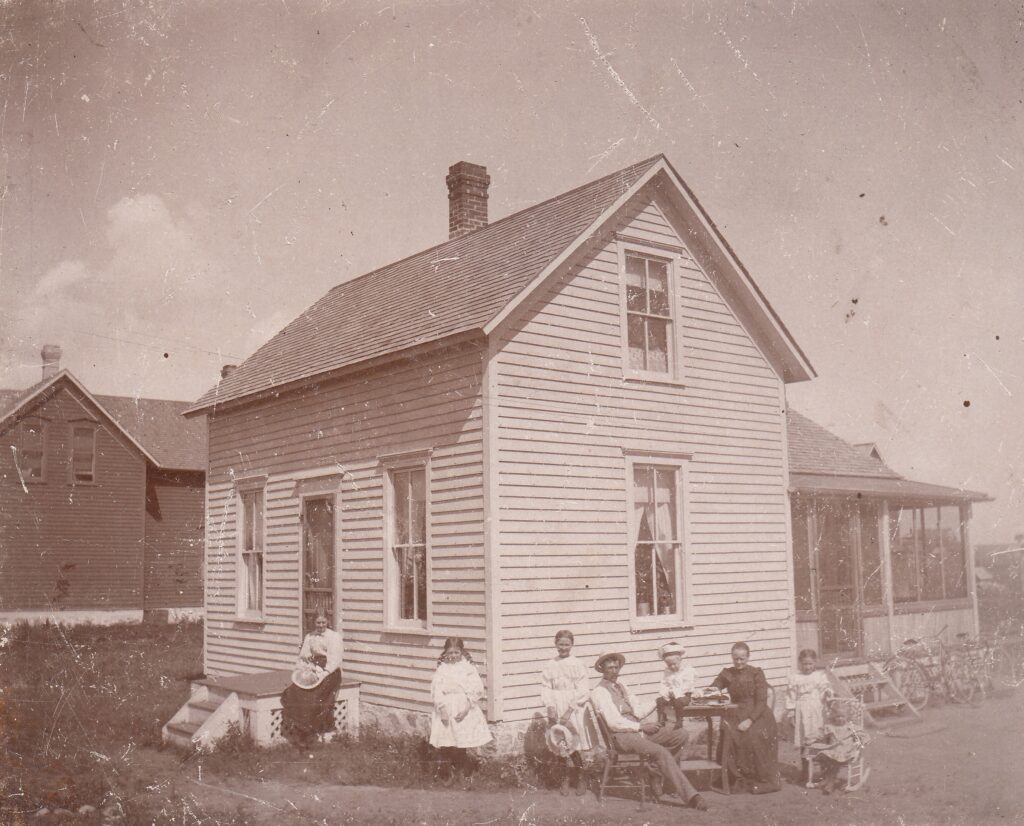
The Ringwall family in Cooperstown
Pehr Eriksson (b. 1861) had planned to leave with Gölin’s uncle Jöns Persson in 1882; his name was written down with those leaving. However, he decided to wait a year so he could marry Gölin. Her parents felt she was too young in 1882 (just turning 17). Pehr grew up on the farm Gumjens, and was the only surviving son of Erik Svensson and Ingrid Persdotter. He had one sister, Karin. In 1871 a family moved next door to the farm called Jo-Påls from Vitvattnet with their four children (three more were born in Överhogdal). The parents were Jonas Persson and Karin Matsdotter. Their oldest son, also called Per b. 1863 was close in age to Pehr (different spellings to tell them apart) and they became friends. Gölin (b. 1865) was the next oldest.
Jonas and Karin were part of the Swedish Mission church and they too wanted to emigrate in 1882, but they did not have the resources. I expect Pehr also was part of the church and in his words, he caught ”Amerika Fever”.
Why would Pehr consider leaving? Unlike many, he was a farmer’s son and had only one sibling to share future inheritance with, (and perhaps, a cousin who also lived at Gumjens). Why would his father Erik sell the farm? He was old and not able to farm it much longer. The lumber companies had become very active in the area and made attractive propositions: sell us the rights to the forests on your land and live in your house for the rest of your days. Other farm buildings on the place could be rented out. Perhaps Erik supported Pehr’s desire to move to the US. He and Ingrid might have been part of the church as well. We can only guess. He sold Gumjens to Svartvik’s lumber company shortly before Pehr made the move. Pehr had the financial ability to emigrate. Pehr and Gölin were married in November of 1882 and moved the following Spring.
The initial plan of many of the first emigrants was to settle in Mayfield, North Dakota. Perhaps the speaker at church who inspired them to move had come from Mayfield. Pehr and Gölin spent the first winter in Mayfield and their oldest daughter Inga was born there in Nov 1883. There was no land available in Mayfield but there was in Cooperstown, so they settled there instead. (Cooper was the first farmer in the area to erect permanent buildings, hence the town’s name) Just before Pehr and Gölin left Sweden, Gölin’s brother Per married Mia (Margareta) Olsdotter (b. 1862) who was from the farm Svens. They emigrated sometime in 1884 and ended up in Cooperstown as well. Their first daughter Katherine was born in North Dakota in July 1884.
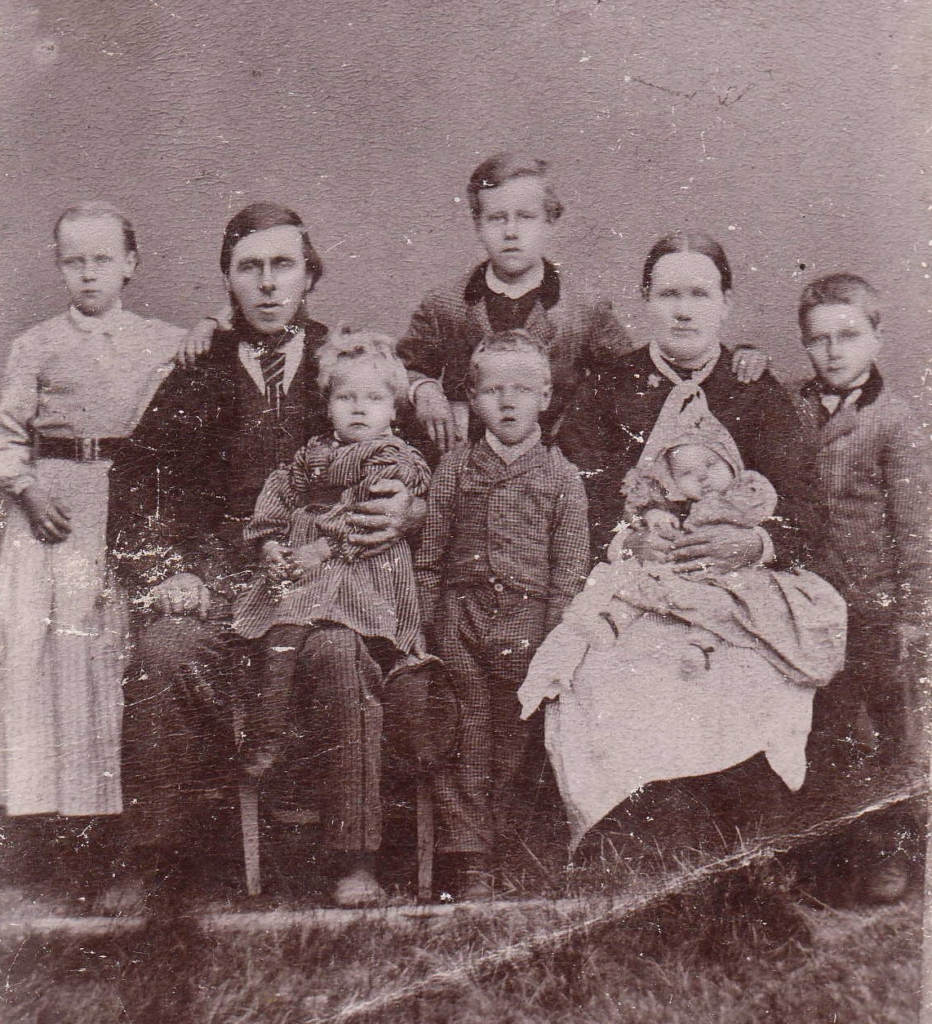
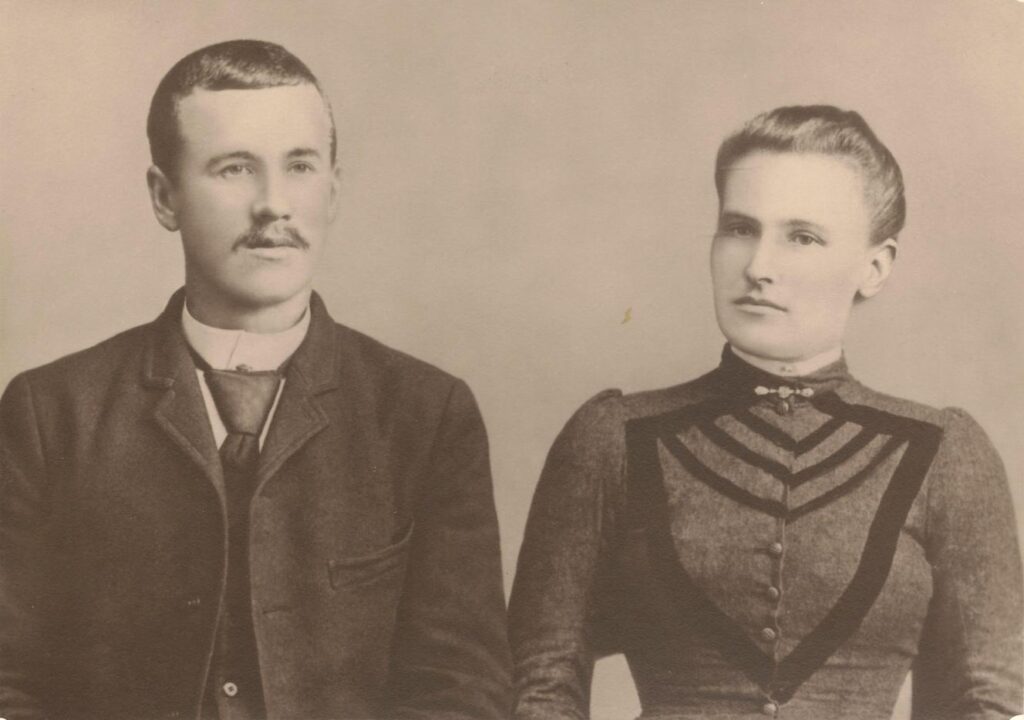
The Skanse and the Ringwall families
I am including Peter and Mia in Pehr and Gölin’s story as their lives were very much interwined for many years. Per Jonsson took a new name in the US, Peter Skanse, and Pehr Eriksson became Pehr E Ringwall. Both names were taken in memory of the remains of the skans on their home farms.
I had an idea that new immigrants quickly secured a farm when they arrived, but as I read the histories I have discovered, I do not think it was necessarily that straightforward. I suspect many of them worked for others for some time. Peter Skanse was not interested in being a farmer. I wonder if he sold his farm to his parents when they arrived? Shortly after their arrival he moved his family to Seattle. I do not know what he did there for work, but later he was a salesman and he also invented a few things. They were back in Cooperstown in 1896 where their sixth child was born, and in Minneapolis by 1898, where Peter ran a confectionery business.
In January 1899 Mia died giving birth to her seventh child. Peter was brokenhearted, as you can read in his letters to her parents. They had lost a daughter a year earlier, but he still had five children and a newborn to care for. His family came alongside him; his sister Cora and brother Olof moved in with his family to help out. A family named Anderson adopted baby Milton. Milton and his birth family kept in contact. The youngest sons, Peter and Andrew, lived at least some of the time with their Skanse grandparents in Cooperstown,
Pehr Ringwall and family sold their Cooperstown farm around 1890 and he claimed in one of his poems that it was not worth the effort. They also moved to Washington State, but he said the boom had passed so they returned to Cooperstown within a year or two. In early 1893 they were working for the farmer Cooper as a handyman (Pehr) and cook (Gölin), living in his farmhouse (see the letters). By this time they had four daughters. Pehr was farming through the 1890s but I do not know if he farmed for himself or worked for others. They had six daughters and a son by 1899.
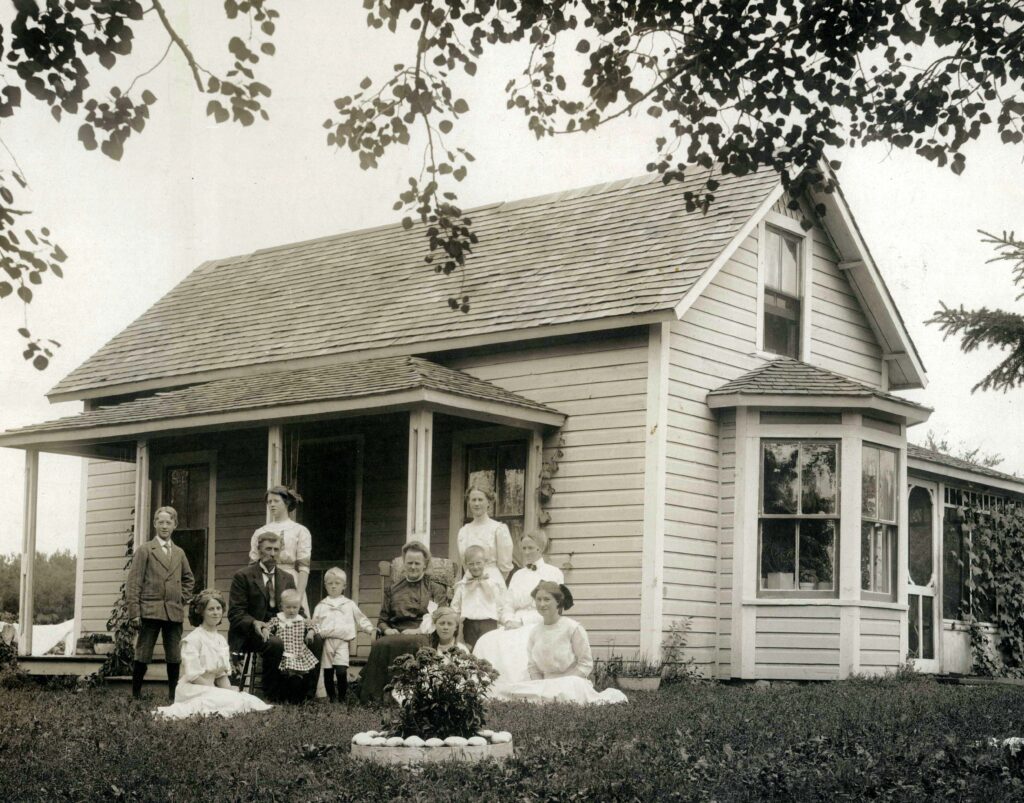
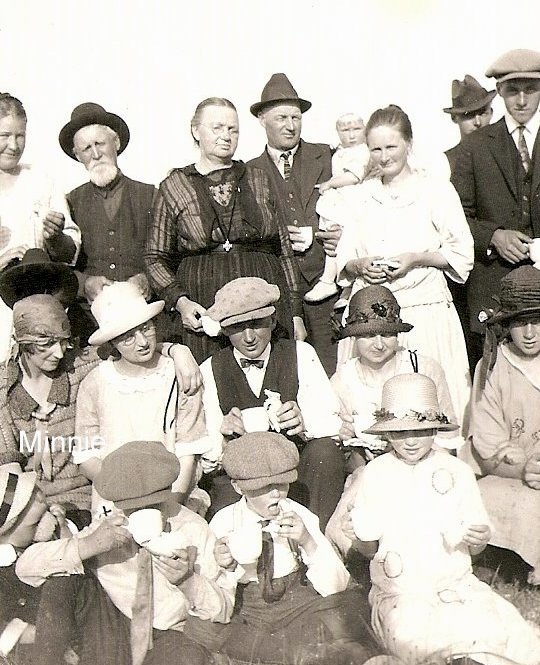
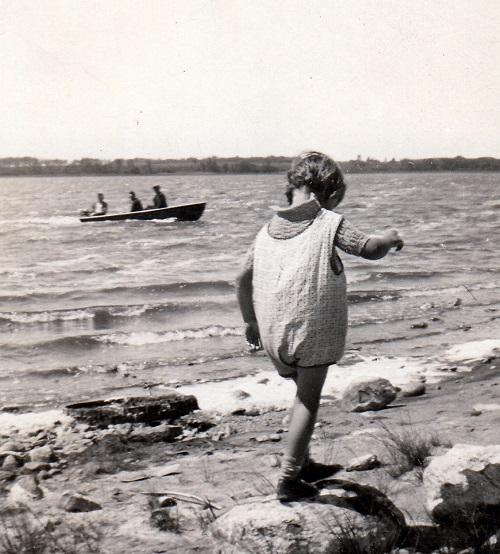
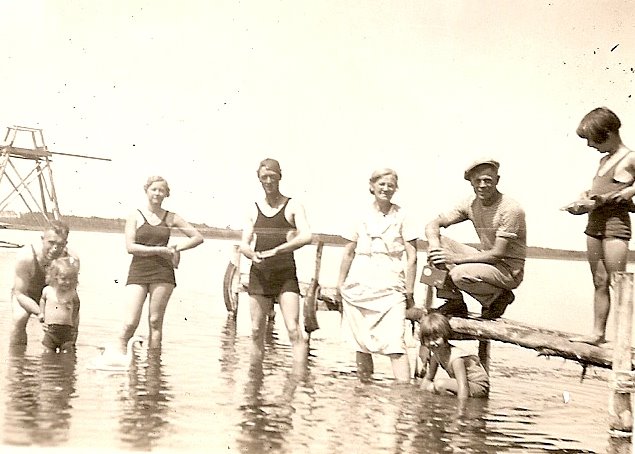
Ringwalls in Alberta, Red Deer Lake
(Little Beaver Tales, Ferintosh and district history provided some of the information below)
Pehr and Gölin also made a huge change in 1900. Many Scandinavian settlers had been encouraged by immigration agents such as CO Swanson to resettle in Western Canada. Swanson was hired by the Canadian government to encourage immigration to the Canadian West. He had previously worked for the US recruiting emigrants from Sweden! From his obituary (found in Canada Posten newspaper)he was responsible for thousands of mostly Scandinavian people from the US settling the farmland in the vicinity of Wetaskiwin and Camrose during the 14 years he worked as an agent. He relocated his own family from Quebec as well, and promoted the area as an idyllic Eden. He especially had a connection with members of the Swedish Mission Covenant churches, of which he also was a member.
The Ringwall family relocated to Red Deer Lake, SE of Wetaskiwin with their seven children, aged between 1 and 16 years. The railroad between Calgary and Edmonton was completed in 1891; Wetaskiwin was on this line. However, there were only primitive trails over the prairie out of Wetaskiwin for the first years. The Ringwalls’ arrived near the beginning of the big influx of settlers to the area which gave them a good choice of the land available. They claimed their homestead on land that bordered Red Deer Lake. The land was grasslands between rolling hills, with many small sloughs (ponds) and copses of trees dotting it. It was a lovely location; Pehr felt it was their Eden. They were able to live in a sod hut that had been vacated by earlier residents while they built their own house.
The farm developed, and they had three more sons, so by 1909 the family had ten children. The oldest daughter Inga married an American in 1906 and left home, but the rest of the family were all at home for some time. The older girls finished their schooling and took teacher training; they worked away from home during the school year and returned in the summers. The post office ran from their home until about 1910 and the address was Ringwall, Alberta. With the post office and the beach at the same location, it is hardly surprising that their property became a good place to stop for a break when traveling with horses between scattered farms and bigger centers such as Wetaskiwin and Camrose. The Ringwalls were welcoming. They also hosted church events here.
Art, the oldest son, took advantage of this and in the 1930’s sold a bit of the beach front to the Municipal district. It was known as Ringwall Beach. The municipality developed the beach, adding a picnic area, diving tower and pier, and placing tables and benches throughout. Art built a concession on the adjacent Ringwall land and initially sold homemade ice cream, rented bathing suits and offered boat rides. Later they bought commercial ice cream and other snacks. The beach remained popular through the years of the Great Depression when money was tight and transportation was an issue. Today there is still a small county run campground here. Art later sold more of his beach front property to create a Bible camp, now known as Living Springs.
Pehr began writing to the Swedish Canadian newspaper Canada Posten about 1913 and mentioned how much he liked his home in ”Ringwall’s Grove” as he called it. He often used the byline ”from the cabin on the beach”. Ringwalls were part of the Swedish Mission church in Malmo, about ten km from their farm and Gölin did not feel the need to learn English until her daughters started to marry men who were not Swedish. There were some hard times. Two of their daughters died from tuberculosis.
The other eight children married and there were many grandchildren and some great grandchildren born while Pehr and Gölin lived. Pehr became quite bothered with arthritis in his later years and Art took over the farming. Pehr died in 1933. Gölin lived with Art and later her daughter Julia and family. She died in 1948.
Art married the much younger Mary Bean later in life and they had one daughter, Ardith. Ardith was Art’s shadow and helper on the farm. When she was six she got too close to where her father was working sharpening a sickle using a power take off, and despite his warning to keep a distance her dress got caught in the equipment. She lost her leg as a result, which was very hard on Art as well. Art had other interests other than farming and played a big role in getting telephone service to the region. Later, in 1953, Gulf oil drilled a successful well on the land, and for almost twenty years it brought in income. It was known as Gulf Ringwall. Art died suddenly in 1960 and Mary and Ardith moved into Camrose. The farm house was left unattended. Being so close to the beach, it was used by partygoers at times. After one of these unauthorized visits, it burnt down, and the land was sold.
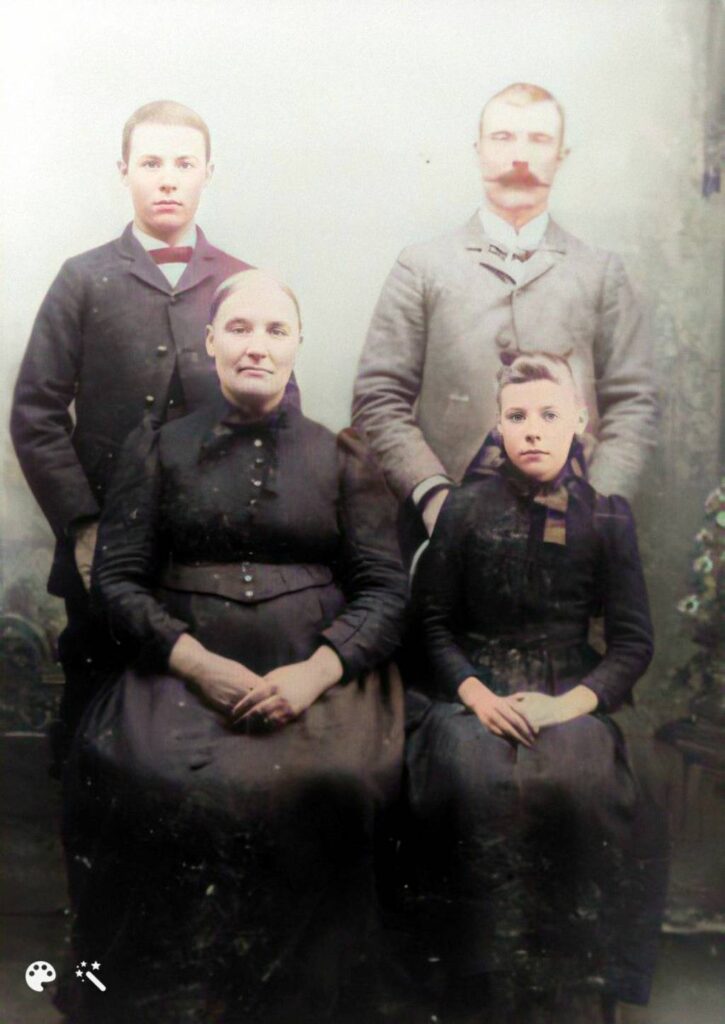
Brita Esbjörnsdotter Johnson, the plucky widow
Brita Esbjörnsdotter, born 1838 on the farm ”Svens” married Jonas Olsson (b. 1837) in 1864. They farmed part of his father’s farm ”Ol Lars” (#28, part of what was #16) and had five children when the Mission church members became excited about the opportunities in the New World. They started to make plans to leave and sold their small farm to the Vaxna forest company. Jonas however had tuberculosis. It is a disease that can lie dormant for years or in a mildly irritating form, and flare up without warning. This may be what happened to Jonas. He never did get the chance to emigrate as he died in December of 1882.
Perhaps he did know he was dying even as they made plans and encouraged Brita to make her way to America and give their children more opportunity. So, that is what this brave woman did.
Brita made the move with Olof 18, Sigrid 14, Esbjörn 11, Johan 4 and Brita 1 ½. It looks like she traveled with others from Överhogdal and was closely related to a few of them. (she was an aunt to Mia, Peter Skanse’s wife and Brita, wife of Lars Sundberg).
They used the surname Johnson. Two of her children died young, unmarried, Sigrid died in 1884 and Esbjörn in 1891. Olof became the main farmer on the land they settled near Cooperstown. He married a woman born in Sweden with the same name as his mother, Brita Johnson, who went by Bessie, and they had two children who survived. Olof left farming and became a merchant by 1910, first at a general store then a hardware store. They lived in Libby, Montana.
(Johan) John farmed in Cooperstown and married Elna Helgsten in 1903 and they had a large family of 9 children. He died in 1925 in North Dakota when he was 46. His wife had her hands very full. By 1930 Elna and the younger children were living in Cooperstown and she worked as a seamstress. The farm must have been sold, I don’t see any of the children farming in the vicinity.
The youngest daughter (Brita) Betsy married John Ost who farmed near Cooperstown for many years. They had three children. They lived in Seattle in 1950 where John was church caretaker and worked as a painter and wall papering hanger. Betsy lived to be 98! Brita died in 1913. She had fulfilled her wish to see her children established in a new life in the United States.
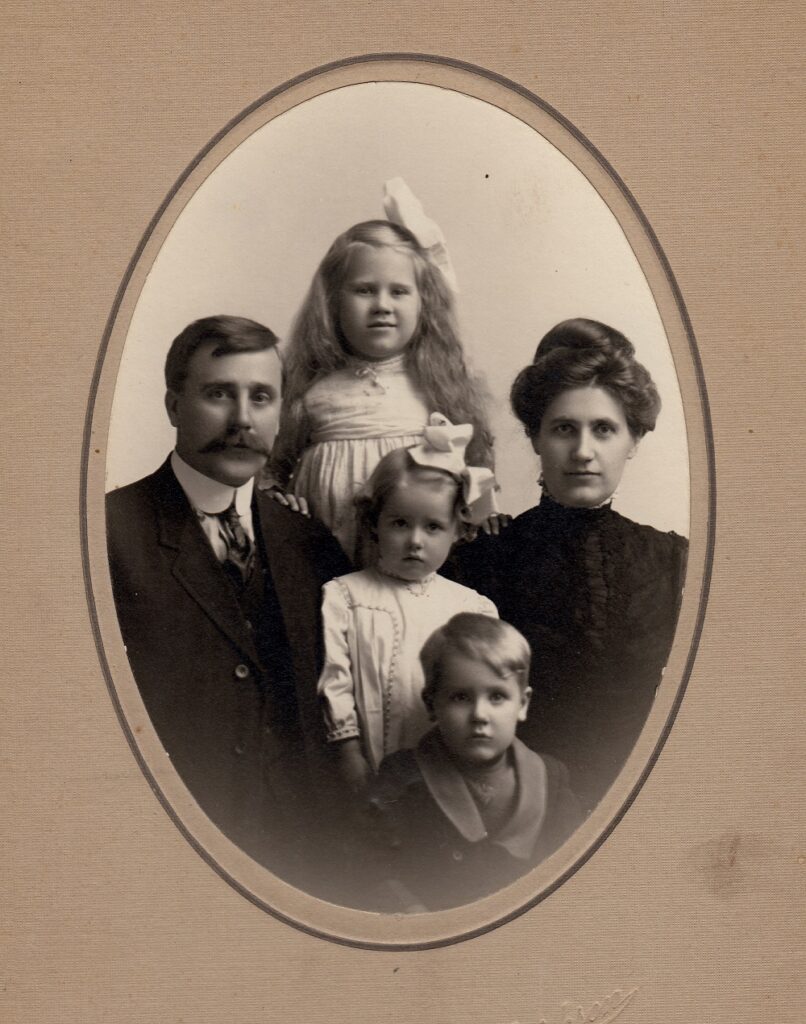
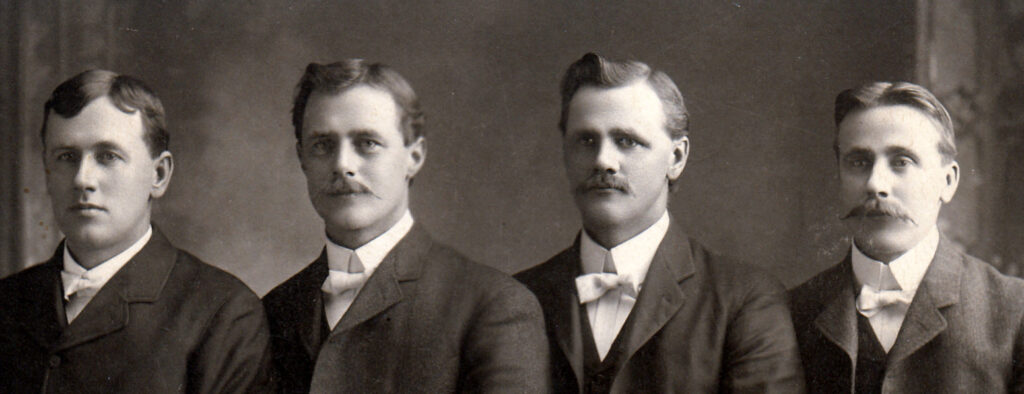
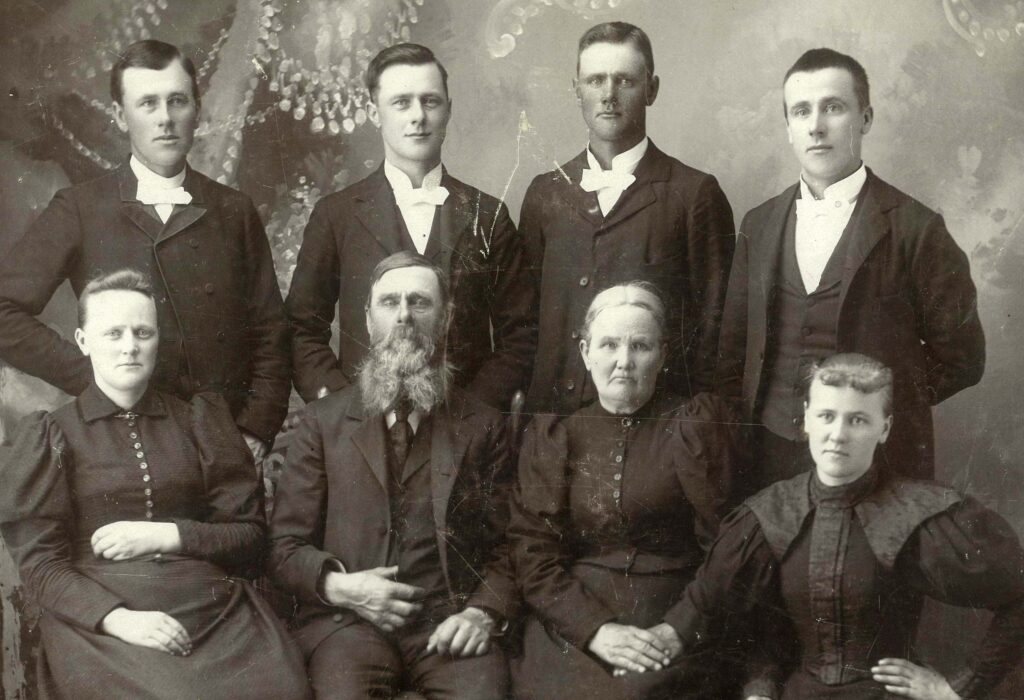
Jonas Persson (Skanse) and Karin Matsdotter
I have mentioned Jonas and Karin a few times; parents of Gölin Ringwall and Peter Skanse. Jonas grew up in Ytterhogdal, the oldest of ten children. His father did not have a farm but perhaps a trade. They were very poor from what I can see. Karin was part of the Skugg family I spoke about earlier, most of her siblings had already settled in the US. Jonas and Karin met when she was working as a maid in Ytterhogdal. When they married, they moved to the small farm Jonas had bought in Vitvattnet, then they moved into Överhogdal in 1871 to the Jo-Påls farm. They had seven children, however their son Anders died from diphtheria when he was six.
It took them a few years to scrape together what they needed to emigrate. By the time they did, Jonas was 57 and Karin 55. Their son Mats left the year before them in 1887 and their younger three children moved with them. In 1888 Matts was 20, Jonas was 17, Olof was 15 and Carin (Cora) was 11. When they arrived in Cooperstown, they may have had a head start. I do not know for sure, but they may have stepped into the farm started by their son Peter and maybe even Pehr Ringwall. Whether or not this is what happened, Jonas and Karin farmed west of Cooperstown for the rest of their days. Their four sons took the surname Skanse, but Jonas preferred the surname Person. However, due to his sons’ choice of names he was often referred to as Jonas Skanse. Jonas had three brothers who also emigrated from Ytterhogdal. We have already looked at Jöns (Jens). His brother Per emigrated in 1882 and farmed close to Jens and Jonas in Cooperstown. He married a girl from Rätan who came over a year later, and they had five children. Anders (Andrew Pierson) came over in 1892 from Flor, Ytterhogdal with his wife and four children. They farmed a few miles away near Glenfield, North Dakota. His wife died before 1900
Jonas’ youngest daughter Cora married a Norwegian-born farmer, George Watne. They farmed in the same area as Jonas and Karin and had six children. Karin died in 1916 and Jonas lived with Cora and George for his final two years. He died in 1918 of cancer; he was 87 years old. Cora’s husband George died in 1926 and Cora in 1935. The children were teens and young adults when they were orphaned. With the exception of the oldest daughter who married and stayed in the Cooperstown area, the others all moved to Colorado.
Earlier I mentioned that Jonas and Karin’s son Peter had moved to Minneapolis after his wife’s death. His three brothers also moved there. Jonas (junior) was in a business school in Minneapolis in 1897 but in 1900 was helping on his parents farm in Cooperstown, along with his new bride Hilma Engstrom. By 1910 Hilma and Jonas had their own farm near Milaca, Minnesota and had two daughters and twin sons. Hilma died in 1915 and Jonas remarried Hulda Westland the next year. They had three daughters, although one died as a toddler. Jonas was farming whe the earlier censuses were taken, but by 1930 he worked at odd jobs and in 1940 he worked for the state highway department. In 1950 he lived in a care home (without Hulda) and he died in 1952. Hulda died in 1960.
Matts and Olof began a business with Peter called Skanse Brothers around 1900. Perhaps this grew from the confectionary store Peter originally owned. The store was really more of a general store from the description. After a few years, Peter got restless and left the partnership. Olof and Matts continued on. Matts died from a ruptured appendix in 1915 which was a real blow to Olof and of course to everyone. Matts was married to Jennie Carlstrom who was expecting their fourth child when he died. She died two years later (from the description in the book ”Skanse saga” history, of a broken heart). The three daughters were raised by their maternal grandparents. The son Marvin went to live with one of his father’s cousins family (a daughter of Anders Pierson)
Olof was a teen when they arrived in America. Before getting into the Skanse Bros store, Olof worked as a ”printers devil”, typesetting for a newspaper. In 1903 he married Anna Axvall and they had 4 children. He continued to manage Skanse Bros until he retired. He died in Minneapolis in 1950, a year after his wife. Olof’s son Ted Skanse headed a successful business he called the Douglas Corporation which manufactured car emblems. Ted wrote the book I have referred to, ”the Skanse Saga” which gave me a lot of information on the Skanse families, as well as the following generations.
Peter had an unsettled time of things after Mia died. In 1908 he remarried Lillie Bodien. In 1910 his four oldest children were living with his brother Matts and his youngest (now 13) with his brother Andrew. I think it might have been hard to be a step mom to children who had lived for years with others. Peter and Lillie began another family and had five children. After leaving Skanse Bros store, Peter sold coffee in Minneapolis, then cars, and later he sold life insurance. He also invented a few items, such as manual turn signals for early cars. His family lived in Minneapolis for years and they retired to California. He died in 1945 in Los Angeles. Lillie died in 1957.
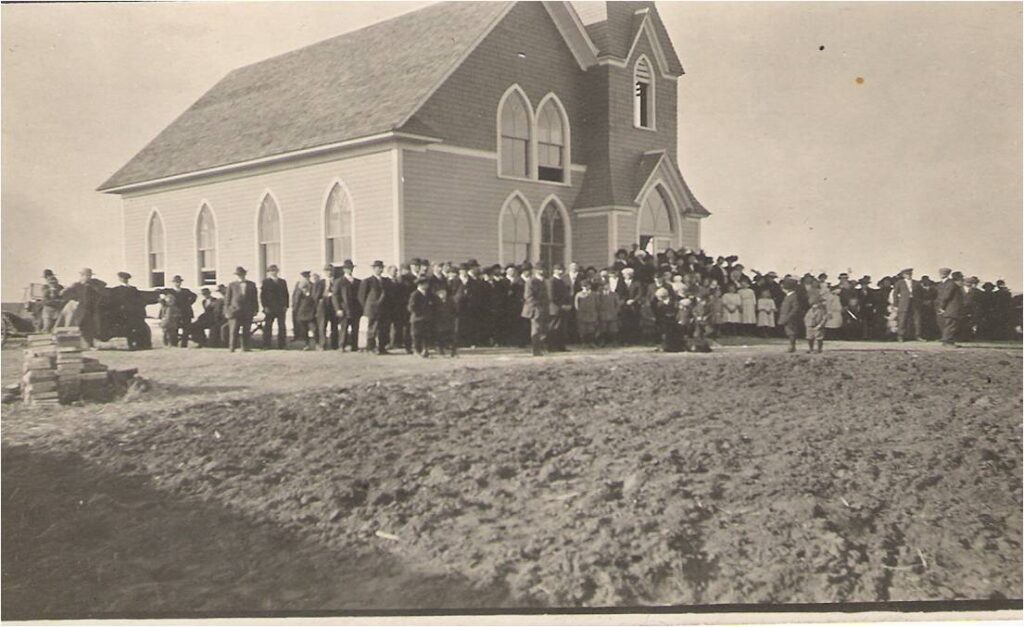
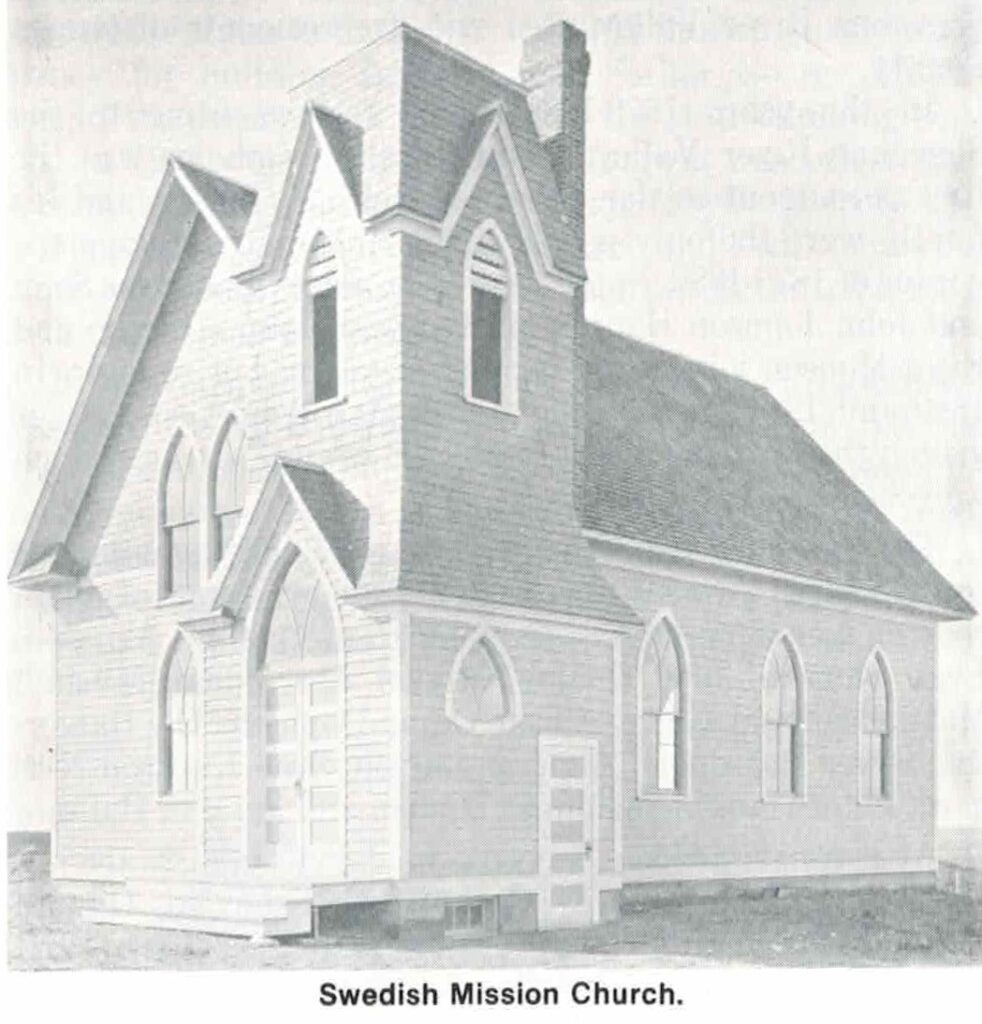
Immigrants supporting one another
I found an interesting article which gives the history of the church established by the Överhogdal immigrants, shared by Melody Skanse. (from the Cooperstown, North Dakota 1882-1982 Centennial, pg 161. slightly edited)
”About 1882 Swedish Christians began arriving to what is now Cooperstown. These people settled four miles west of what is now the town. Feeling the need of Christian Fellowship they began meeting in their homes, where they sang the good old hymns and read the Bible, giving their testimonies. The head of the household they met in took charge, giving a word of admonition to follow their Saviour.
Sunday school was added and it was church to them all. The farmers were Per Person, Ludvig Anderson, Jonas Dahlbom, Jens Person and Brita Johnson, a widow with several children.
Soon they felt the need of a church home. In 1914 they sought advice from each other. None of them had funds to build such a building. At a business meeting it was decided to circulate a list to all who wished to contribute to such a building. Jonas Skanse and Peter Person, son of Per Person were chosen for that duty.
Neighbours and business places contributed. A petition was sent to both Sears, Roebuck and Montgomery Ward, the catalogue houses in Chicago, with whom the farmers did business by mail. Mr Hoffman was chosen as contractor to build the church. The building was erected on the northeast corner of Per Person’s tree claim and was dedicated Nov 1, 1914. A pastor was called and the work progressed. Daily vacation Bible school was added and ran for two weeks each summer, five days a week. In 1931 members of the church voted to disband and join Bethlehem congregation in Cooperstown. The building was sold to the Methodist congregation.
Most of the founding members were from Överhogdal. Per Person who was mentioned was a brother of Jonas and Jens Person (born in Ytterhogdal). Jonas (Jonsson) Dahlbom (b.1841)and his wife Kerstin Olsdotter (b.1853) moved at the same time as Brita Esbjörnsdotter and Pehr and Gölin Ringwall in 1883. Jonas Dahlbom was born in Överhogdal to Jonas Ersson Printz and Ingeborg Jönsdotter. Jonas Printz had a military job of some sort (artillery?) and might have been from Stockholm. He did not seem to he home much. Ingeborg grew up in Sunnanå, Överhogdal. Jonas changed his surname to Dahlbom before leaving Överhogdal and worked as a blacksmith. Kerstin was born in Rätan, and they were childless when they left Sweden. From the census record I found it does not look like they had children in Cooperstown either.
